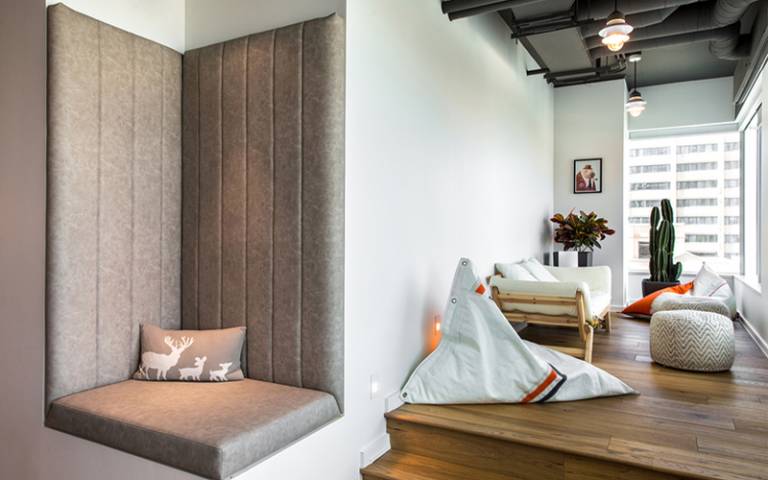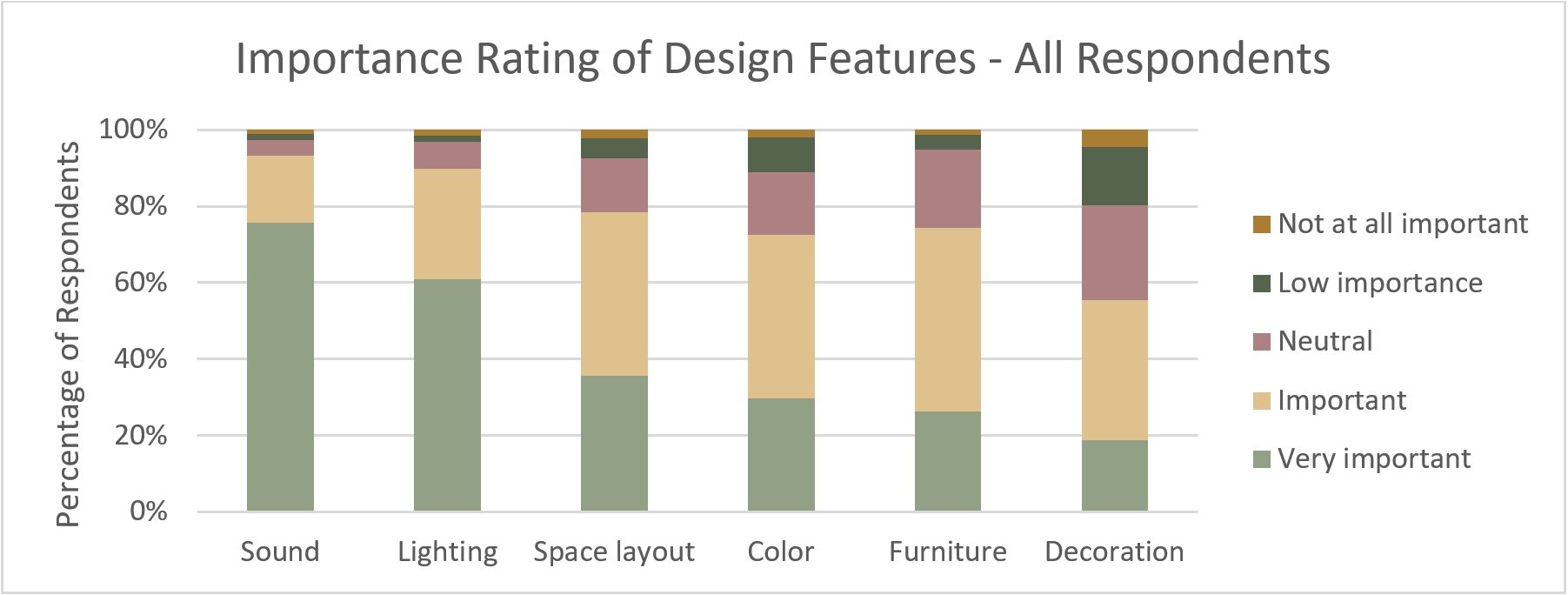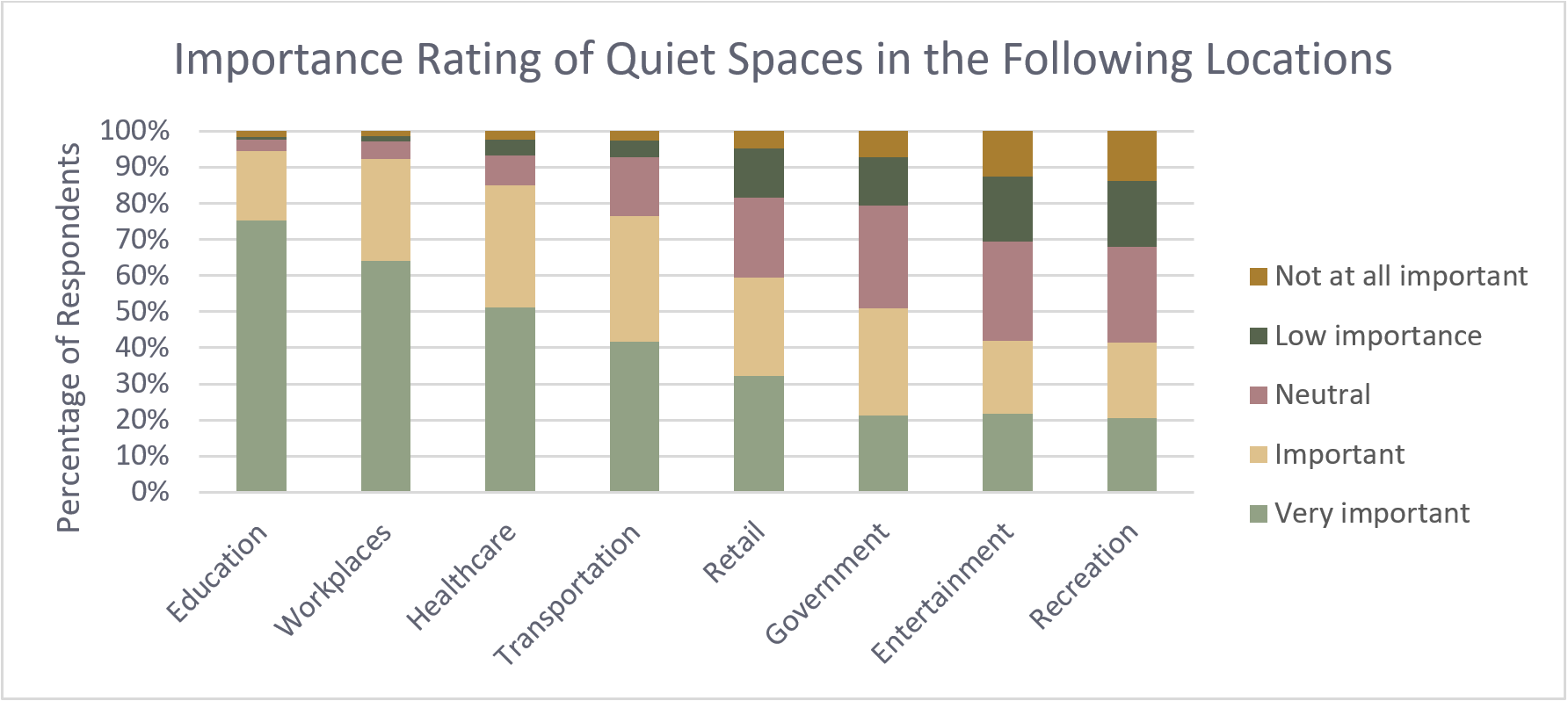Exploring the Design Preferences of Neurodivergent Populations for Quiet Spaces
11 March 2021
Health, Wellbeing and Sustainable Buildings MSc alumna Toar Sadia writes about her dissertation conducted in 2020.

Photo credit: Linebox Studio
People have distinct experiences of space and some of these differences are attributed to the natural variations in our brains, a concept known as neurodiversity. Research shows that people with neurodivergent conditions, such as autism spectrum disorder (ASD), attention deficit hyperactivity disorder (ADHD) and learning disabilities/differences (e.g. dyslexia) may be more susceptible to experiencing sensory overload, a condition in which sensory stimuli are received at an excessive rate or intensity, and thus may benefit from having access to a quiet space where they can regulate their senses. Currently there is a lack of guidance on how to design quiet spaces which often leaves them inadequate in addressing the needs of their users. My dissertation research, conducted as part of the Health, Wellbeing and Sustainable Buildings MSc, intends to inform design guidelines by exploring the design preferences of neurodivergent populations for quiet spaces.
The study was conducted using a globally administered online survey that received 312 responses across continents, and six semi-structured interviews with professionals who have particular knowledge in this specialised design field.
The results of the study show that sound and lighting are the most important design considerations in designing quiet spaces, that educational buildings are the most critical places in which to implement them, and that nature is a favourable guiding principle in their design. Nevertheless, perspectives on most design preferences were diverse and often contradictory. A statistical analysis shows that many of these preferences are correlated with the frequency at which the person experiences sensory overload and thus people’s sensory profile may be an underlying mechanism which guides their design preferences.



In light of these findings, it is recommended to design quiet spaces as neutral spaces for the most sensitive (hypersensitive) users, with optional stimulating design features for the least sensitive (hyposensitive) users, while ensuring that the experience of one does not compromise the experience of the other. Moreover, variety, flexibility and control emerged as critical themes for facilitating inclusive design and empowering users by providing them with autonomy over their environment. Given the positive association between the frequency in which sensory overload is experienced and the person’s desire for quiet spaces, it is advisable to consider additional populations which may be susceptible to sensory overload in future research on quiet spaces.
- More information about Toar’s background and experiences studying the MSc HWSB are available here
- If you would like further information about the research, a preprint of the dissertation can be found here: https://engrxiv.org/fkaqj/
 Close
Close

